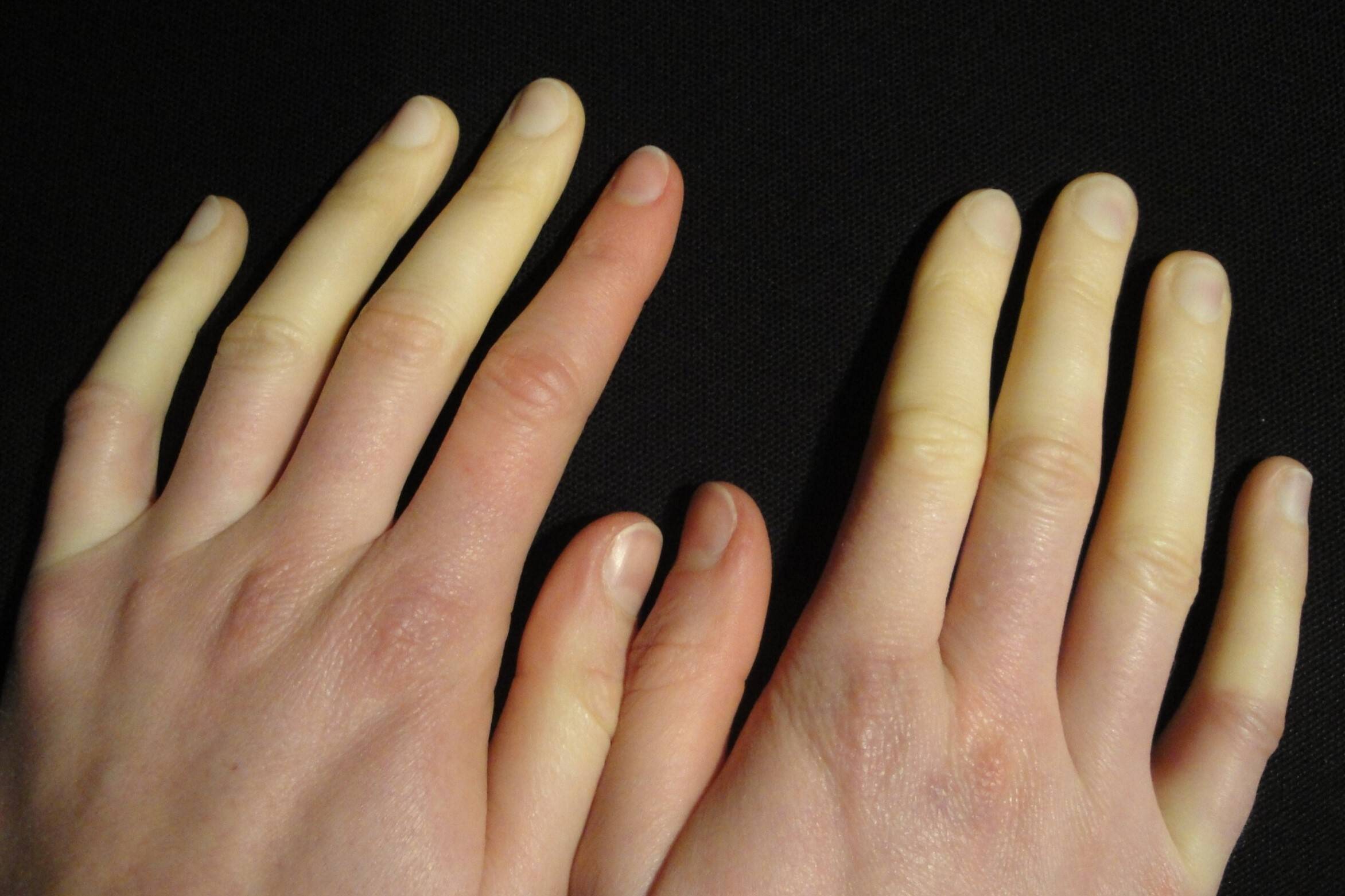
Raynaud Disease is a condition that affects blood flow to certain parts of the body—usually the fingers and toes. Did you know that it can cause these areas to turn white or blue when exposed to cold or stress? This happens because the small arteries that supply blood to your skin constrict excessively. But why does this occur? The exact cause remains unknown, but it’s believed to involve an overreaction of the body's natural response to cold or stress. Want to know more? We’ve gathered 50 intriguing facts about Raynaud Disease that will help you understand its symptoms, triggers, and treatments. Stay tuned to learn how to manage this condition effectively and improve your quality of life.
Key Takeaways:
- Raynaud Disease affects blood flow to fingers and toes, causing them to turn white or blue and feel cold or numb. Stress and cold temperatures are common triggers, and it's more prevalent in women and in colder climates.
- Recognizing symptoms of Raynaud Disease is crucial for managing it. Symptoms include fingers or toes turning white, then blue, and finally red, as well as numbness, pain, and swelling. Lifestyle changes, medications, and stress management techniques can help in managing the condition.
What is Raynaud Disease?
Raynaud Disease, also known as Raynaud's phenomenon, affects blood flow to certain parts of the body—usually fingers and toes. It occurs when small arteries constrict excessively in response to cold or stress. This can cause affected areas to turn white or blue and feel cold or numb.
- Named after French doctor Maurice Raynaud, who first described it in 1862.
- More common in women than men.
- Often begins between ages 15 and 30.
- Can be primary (no underlying condition) or secondary (linked to other diseases).
- Secondary Raynaud's is usually more severe.
- Commonly affects fingers and toes but can also impact ears, nose, and lips.
- Episodes can last from minutes to hours.
- Stress and cold temperatures are the main triggers.
- Smoking can worsen symptoms.
- More prevalent in colder climates.
Symptoms of Raynaud Disease
Recognizing the symptoms is crucial for managing Raynaud Disease. Symptoms can vary in intensity and frequency.
- Fingers or toes turning white, then blue, and finally red.
- Numbness or tingling in affected areas.
- Pain during or after an episode.
- Skin may feel cold to the touch.
- Ulcers or sores in severe cases.
- Swelling in fingers or toes.
- Brittle nails.
- Skin may thicken over time.
- Reduced blood flow can cause tissue damage.
- Symptoms often occur symmetrically (both hands or both feet).
Causes and Risk Factors
Understanding what causes Raynaud Disease and identifying risk factors can help in prevention and management.
- Genetic predisposition plays a role.
- Connective tissue diseases like scleroderma and lupus can cause secondary Raynaud's.
- Repetitive actions, like typing or playing the piano, can trigger it.
- Exposure to certain chemicals, like vinyl chloride, increases risk.
- Injuries to hands or feet can lead to Raynaud's.
- Some medications, including beta-blockers, can trigger symptoms.
- Hormonal changes, especially in women, can influence onset.
- Family history increases likelihood.
- Autoimmune diseases are common underlying causes.
- Occupational hazards, like using vibrating tools, can contribute.
Diagnosis and Tests
Diagnosing Raynaud Disease involves a combination of medical history, physical exams, and specific tests.
- Nailfold capillaroscopy examines capillaries near fingernails.
- Blood tests can identify underlying autoimmune conditions.
- Cold stimulation test measures response to cold exposure.
- Doctor may ask about frequency and duration of episodes.
- Family medical history is often reviewed.
- Physical exam focuses on affected areas.
- Skin biopsy may be performed in rare cases.
- Differential diagnosis rules out other conditions.
- Imaging tests like Doppler ultrasound assess blood flow.
- Diagnosis often involves ruling out other diseases.
Treatment and Management
Managing Raynaud Disease involves lifestyle changes, medications, and sometimes surgical interventions.
- Keeping warm is essential; wear gloves and warm socks.
- Stress management techniques can reduce episodes.
- Medications like calcium channel blockers improve blood flow.
- Avoiding smoking and caffeine helps.
- Biofeedback therapy teaches control over body temperature.
- In severe cases, nerve surgery may be considered.
- Regular exercise improves circulation.
- Avoiding repetitive hand movements can prevent episodes.
- Moisturizing skin prevents cracking and sores.
- Regular check-ups with a healthcare provider are important.
Understanding Raynaud Disease
Raynaud Disease affects millions worldwide, causing fingers and toes to turn white or blue in response to cold or stress. This condition, named after French doctor Maurice Raynaud, can be primary (without an underlying disease) or secondary (linked to other health issues). Symptoms include color changes in the skin, numbness, and pain. While it can be managed with lifestyle changes like avoiding cold exposure and stress, severe cases might require medication or surgery. Knowing the triggers and early signs helps in managing the condition effectively. If you suspect you have Raynaud Disease, consult a healthcare professional for a proper diagnosis and treatment plan. Awareness and understanding of this condition can lead to better management and improved quality of life for those affected. Stay informed, stay warm, and take care of your health.
Frequently Asked Questions
Was this page helpful?
Our commitment to delivering trustworthy and engaging content is at the heart of what we do. Each fact on our site is contributed by real users like you, bringing a wealth of diverse insights and information. To ensure the highest standards of accuracy and reliability, our dedicated editors meticulously review each submission. This process guarantees that the facts we share are not only fascinating but also credible. Trust in our commitment to quality and authenticity as you explore and learn with us.
